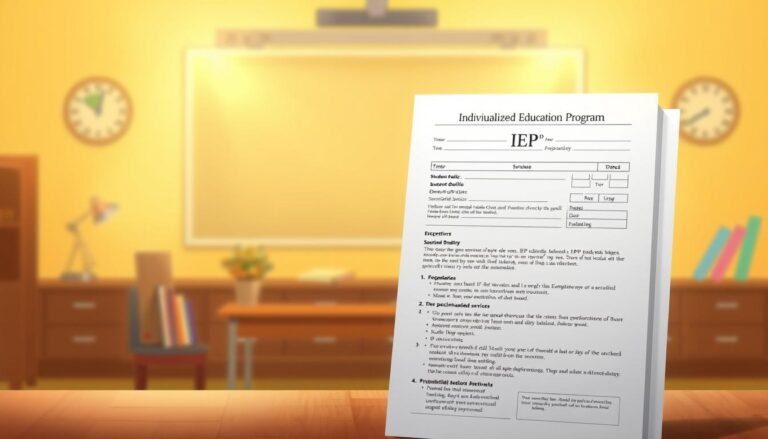
Navigating the Challenges: A Parent’s Guide to Learning Disabilities in Children
Introduction
Every child is unique, and their journey through learning is no exception. For many, the road is smooth and straight, while for others, it presents various unexpected hurdles. If you’re a parent who has found yourself worried about your child’s academic struggles, the phrase "Navigating the Challenges: A Parent’s Guide to Learning Disabilities in Children" likely resonates deeply with you. Learning disabilities affect an estimated 1 in 5 children, making this guide essential for parents seeking to support their children effectively. The good news is that with the right information and resources, you can turn these challenges into opportunities for growth and development.
This article delves into the complexities of learning disabilities, how to identify them, what support options are available, and ways to foster resilience in your child. Let’s embark on this essential journey of understanding and advocacy together.
Understanding Learning Disabilities
What Are Learning Disabilities?
Learning disabilities (LD) refer to a range of disorders that affect the ability to read, write, speak, or perform math calculations. They are not indicative of a child’s intelligence. Instead, they reflect the brain’s unique processing abilities. Common types of learning disabilities include:
- Dyslexia: Difficulty reading and processing language.
- Dyscalculia: Difficulty with numbers and mathematical concepts.
- Dysgraphia: Difficulty with writing, including handwriting and spelling.
Signs and Symptoms
Identifying learning disabilities early can lead to effective intervention. Here are some signs to look out for based on your child’s age:
- Pre-school: Difficulty recognizing letters, numbers, or colors; trouble with rhyming.
- Elementary School: Struggles with reading fluency, writing mechanics, or math concepts.
- Middle/High School: Difficulty staying organized, problems completing assignments, or understanding complex texts.
Case Study: The Impact of Early Identification
Consider the case of Sarah, a five-year-old who struggled with phonemic awareness and letter recognition. After a comprehensive evaluation, it was discovered she had dyslexia. With targeted interventions and specialized reading programs, Sarah was able to read fluently by the end of her second-grade year. This example highlights the importance of recognizing signs early, which is a critical step in "Navigating the Challenges: A Parent’s Guide to Learning Disabilities in Children."
The Importance of Early Intervention
Why Early Intervention Matters
Research consistently shows that early intervention in children with learning disabilities leads to better long-term outcomes. The sooner a child receives the right support, the more likely they are to develop coping strategies and achieve academic success.
In fact, studies reveal that children who receive intervention services before age 8 are more likely to:
- Develop effective learning strategies.
- Experience less frustration and anxiety regarding school.
- Have improved self-esteem and social skills.
How to Get Started
- Observe and Document: Keep track of your child’s struggles and achievements over time.
- Seek Professional Evaluation: Consult a psychologist or educational specialist for a comprehensive assessment.
- Involve the School: Collaborate with teachers to tailor learning plans for your child’s needs.
Navigating Special Education Services
Understanding the IDEA
The Individuals with Disabilities Education Act (IDEA) ensures that children with learning disabilities receive the support they need. Under this law, your child is entitled to a free and appropriate public education.
Creating an IEP or 504 Plan
Individualized Education Programs (IEP) and 504 Plans are tailored plans designed to meet the unique educational needs of students with learning disabilities.
- IEP: Typically for students requiring specialized instruction.
- 504 Plan: Offers accommodations and modifications, but does not necessitate specialized instruction.
Case Study: A Successful IEP Implementation
Meet John, a middle school student with ADHD and dysgraphia. His parents collaborated with teachers to develop an IEP that included extended time for assignments and access to assistive technology. As a result, John showed significant improvements in his writing and organization skills, illustrating how effective frameworks in "Navigating the Challenges: A Parent’s Guide to Learning Disabilities in Children" can foster success.
Building Resilience in Your Child
The Role of Parents
As a parent, your role in supporting your child through learning disabilities is paramount. Building resilience involves fostering a growth mindset, where challenges are viewed as opportunities for growth.
- Encourage Positive Thinking: Help your child frame their struggles as temporary challenges that they can overcome.
- Set Realistic Goals: Ensure that goals are achievable and celebrate even the smallest victories.
Communication is Key
Maintain an open dialogue with your child about their feelings regarding school and learning. Addressing their concerns can significantly boost their confidence and emotional well-being.
Case Study: A Growth Mindset in Action
Consider Emily, who often felt defeated by her math difficulties. Through parental support, she developed a growth mindset. With practice and affirmations of her abilities, Emily transformed her approach to math, gradually seeing improvement and gaining confidence. This transformation exemplifies the essence of "Navigating the Challenges: A Parent’s Guide to Learning Disabilities in Children."
Additional Resources and Support
Networks and Organizations
There are numerous organizations dedicated to supporting parents of children with learning disabilities, including:
- Learning Disabilities Association of America (LDA)
- National Center for Learning Disabilities (NCLD)
- The International Dyslexia Association (IDA)
These organizations provide valuable resources, support groups, and educational materials to help you navigate the various challenges.
Helpful Tools and Strategies
Consider incorporating tools and strategies that can aid your child, such as:
- Assistive Technology: Tools like speech-to-text software or audiobooks can make a significant difference.
- Visual Aids: Charts and diagrams can help children understand concepts better.
Conclusion
Navigating the journey of a child with learning disabilities involves dedication, understanding, and a proactive approach. Everything discussed in this guide reflects the overarching theme of "Navigating the Challenges: A Parent’s Guide to Learning Disabilities in Children." By identifying early signs, seeking proper resources, communicating openly, and fostering resilience, you can empower your child to thrive in both their academic and personal lives.
As you move forward, remember that every effort counts. Celebrate the small victories, and always advocate for the support your child deserves. Together, we can turn challenges into pathways for success.
FAQs
1. What are the common types of learning disabilities?
Common types include dyslexia, dyscalculia, and dysgraphia, each impacting different aspects of learning.
2. How can I tell if my child has a learning disability?
Look for signs like difficulty reading fluently, trouble with number concepts, or struggles with written expression over time.
3. What should I do if I suspect my child has a learning disability?
Document your observations and seek a professional evaluation through your school or a specialist.
4. Are there financial resources available for specialized learning support?
Yes, many local and federal programs offer financial assistance for special education services.
5. How can I support my child emotionally through this process?
Maintain open communication, encourage a growth mindset, and celebrate their efforts and achievements.
6. What role do teachers play in supporting children with learning disabilities?
Teachers can provide accommodations, develop individualized education plans (IEPs), and create an inclusive classroom environment tailored to diverse learning needs.
By engaging with the content in this guide and taking proactive steps, you are not just navigating the challenges; you are helping your child carve out a path to success in their learning journey.
















